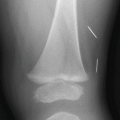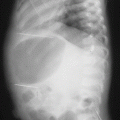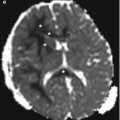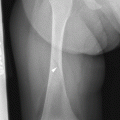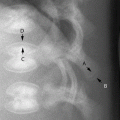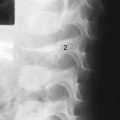and Marguerite M. Caré1
(1)
Department of Radiology ML5031, Cincinnati Children’s Hospital, Cincinnati, Ohio, USA
Keywords
Spinal subdural hemorrhageVertebral fractureAbusive head injuryAlthough intracranial injuries from abusive trauma have been well documented, spinal injuries in abuse are increasingly being recognized and reported [1–4]. In the past, the spine was primarily imaged with radiographs looking for bony or vertebral fractures. However, as practice changes have evolved, more infants that have suffered abusive head injuries are now routinely undergoing spinal MR imaging . Injuries to the vertebra and spinal canal may also be detected on CT imaging obtained in patients with concerns of chest or abdominal injuries. Because many of these patients may have suffered devastating intracranial injuries, detecting spinal abnormalities may be difficult, and they may be missed on clinical examinations.
Spinal injuries may involve the spinal cord , spinal column, or adjacent soft tissues, but recent studies have focused on the presence of spinal subdural hemorrhage , a finding more frequently seen in patients suffering inflicted injuries. In a study comparing abusive and accidental head injury patients, Choudhary et al. found spinal subdural hemorrhage in 31/67 abused patients (46 %) undergoing spinal imaging [1]. In 38 patients undergoing imaging including the thoracic and lumbar spine, 63 % were found to have spinal subdural hemorrhage. In contrast, the study found spinal subdural hemorrhage in only 1 of 70 accidental head injury patients undergoing head and either spinal or abdominal imaging for concerns of trauma; 22 of these patients had intracranial hemorrhage, however. The patient with spinal subdural hemorrhage in the accidental group was found to have cerebellar contusions and a comminuted and displaced occipital bone fracture.
Prior to this, Koumellis et al. found spinal subdural hemorrhage in 8 of 18 infants (44 %) with spinal imaging and abusive head injury [4]. All of these infants were found to have both supratentorial and infratentorial hemorrhage, and all of the spinal hemorrhages were clinically occult.
Unlike direct injuries to the spinal canal or cord, the etiology of the spinal subdural hemorrhage in these patients is less clear. Redistribution with inferior extension or tracking of intracranial hemorrhage from the intracranial compartment is a favored proposed mechanism, and the two compartments have been shown to be in continuity (Fig. 7.1). Frequently, the spinal subdural hemorrhage is found in the thoracolumbar region, likely the result of settling or layering in this dependent location in the supine infant. Therefore, it is important to inspect this location during chest and abdominal pelvic CT studies which may be obtained earlier in the course of hospitalization than dedicated MR spinal imaging. However, with the reduced dose techniques in CT, visualization of intraspinal structures is often more difficult than in the past.


Fig. 7.1
A 2-year-old with acute respiratory arrest and intracranial subdural hemorrhage. (a) Sagittal T1-weighted cervical spine image demonstrates T1 hyperintense posterior fossa (arrow) and spinal subdural hemorrhage (arrowhead). (b) Sagittal T2-weighted image of the lumbar spine shows more extensive ventral and dorsal T2 hypointense spinal subdural hemorrhage (arrows) causing centralization of the nerve roots
Spinal subdurals may be thin and barely perceptible, or the collections may be large and cause mass effect on the spinal cord. However, these hemorrhagic collections are usually managed conservatively and are often clinically occult, as the intracranial injuries usually cause more significant and clinically detectable insults to these infants.
Ligamentous injuries to the spine may also occur in abusive trauma and may be an important distinguishing finding to help determine traumatic from nontraumatic causes of intracranial hemorrhage [5]. Ligamentous injuries are most readily identified on sagittal fat-suppressed T2 or STIR (short tau inversion recovery) MR images (Fig. 7.2). Ligamentous injuries primarily involve the cervical spine and include the posterior ligamentous complex, including the atlanto-axial, atlanto-occipital, interspinous ligaments, and the nuchal ligament in the cervical spine [2, 5]. Smaller and more anterior ligamentous structures may also be injured, as well as the finding of surrounding soft tissue edema in the suboccipital region or prevertebral locations [2]. Although some authors report a higher incidence of cervical spinal injuries in young infants suffering abusive rather than from accidental trauma [2, 3], other authors report that they do not find a statistical significance between these two populations [5]. However, Kadom et al. did find that when cervical spinal injuries are seen in conjunction with bilateral hypoxic-ischemic brain injury , 10/13 injuries in these children (77 %) were considered abusive, a statistically significant relationship [5]. In infants suffering ligamentous injuries to the cervical-occipital junction with associated brain injuries in a pattern of hypoxic-ischemic injury, either from accidental or abusive injuries, direct MR evidence of cord injury is usually lacking [2].

